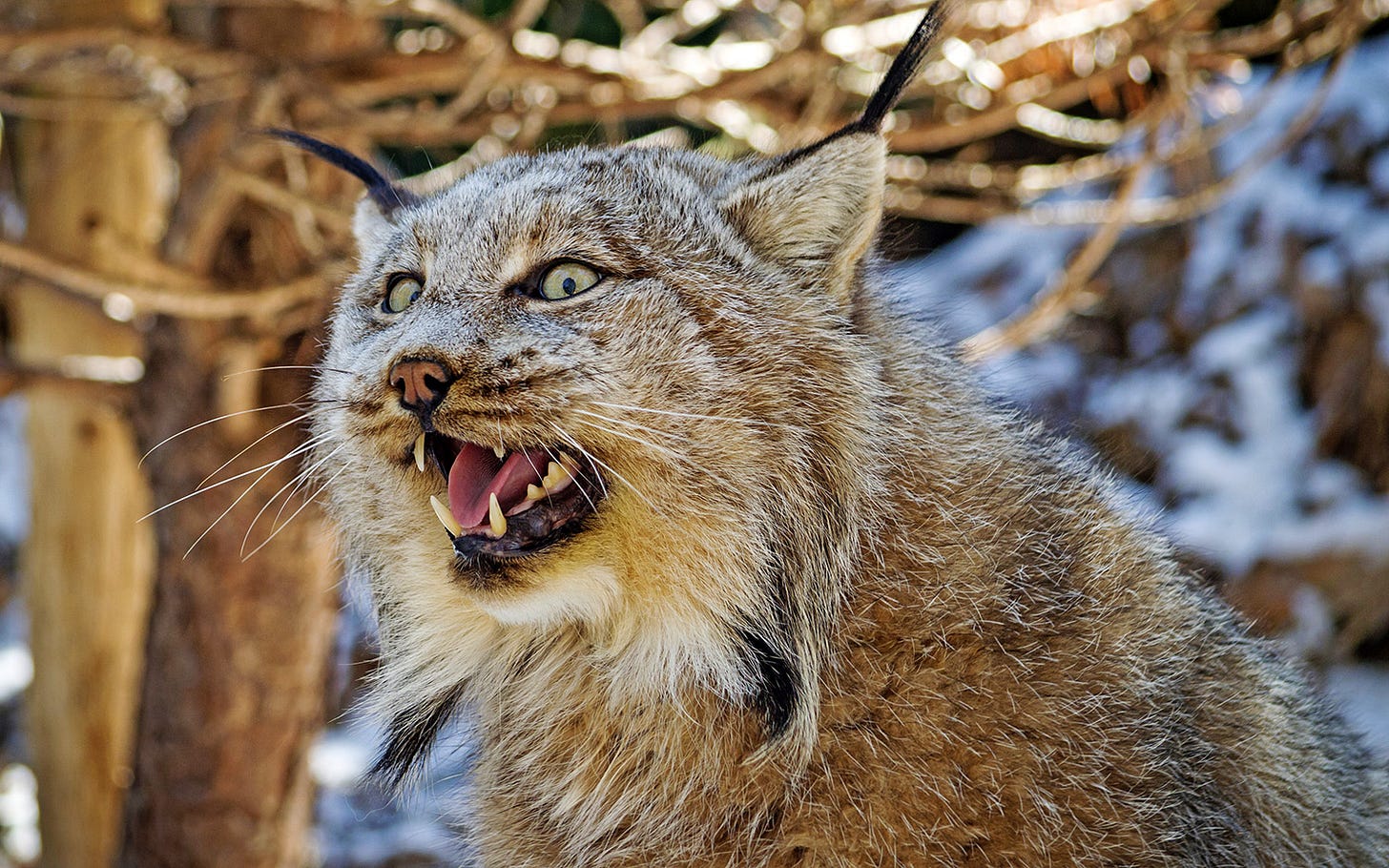Does the Cumbria’s future lie in hosting shadowy killers like the lynx?
Advocates say bringing back the nocturnal predator that died out 1,300 years ago would boost biodiversity. It would kill “pests" such as deer - and create a lucrative tourist attraction.

What is the real story behind the campaign to reintroduce the lynx to the Lake District? Bringing back the night-dwelling wild cat with its characteristic black ear tufts, enthusiasts say, would help control deer and create a money-making eco-tourism destination.
Tourists would happily pay a few pounds to come and see the charismatic but shy carnivore that became extinct in Britain 1,300 years ago, the theory goes. The money raised would be used to boost conservation, activists say.
Cumbrian farmers have been warned by the Government to expect each lynx to eat 2.4 sheep a year. Unsurprisingly, they have branded the plan “insane.”
But 82 per cent of the public supports releasing extinct animals to the wild. Some 45 per cent specifically backing the reintroduction the lynx, according to a YouGov poll of two thousand adults.
The public interest company known as the Lynx Trust UK, the commercial outfit behind the scheme, regards the remote valley of Ennerdale as the ideal location for the return of the secretive woodland-dwelling feline.
A rewilding project has been under way there since 2003 to return land to its natural, uncultivated state and reintroduce wild animals previously driven out by man. The golden-haired cat would instil a beneficial “ecology of fear” preying on overabundant species such as roe deer that damage young trees, the trust says. Its scent would spread across the forest and keep other wild creatures on the move.
That would cut overgrazing so forests could regenerate. But, in reality, restoring lynxes to Lake District woodlands is just the first step in a wider strategy cherished by conservation activists: the eventual rewilding of Britain. Wolves, wolverines, beavers, boar, and other top predators would then also return.
“The main point is that bringing the lynx back will cost nothing. But it could boost eco tourism and make the taxpayer £12.8 million per year. Not a bad deal” - Lynx Trust UK scientist Paul O’Donoghue.
The lynxes would rehabilitate entire ecosystems, return areas to their natural, uncultivated state and, as the Wild Foundation charity puts it, “restore wilderness.” Restoring nature to its raw state has been an environmentalist’s dream for decades. The term rewilding was first used in 1990 by the Earth First! group that is active in nineteen countries. It is much more radical than most other green organisations. It blockaded the Dungeness nuclear power station in Kent, launched a wave of British anti-road building protests and sabotaged a gas pipeline in Aspen Colorado. That turned off heat to 3,500 people on December 29, 2020, when the temperature was minus 15 C. Activists wrote Earth First! on the pipe.
“If nature has been destroyed by capitalism it seems self-defeating to argue that nature can only be ‘saved’ through ... capitalism” - Tor A. Benjaminsen at the Norwegian University of Life Sciences.
Although reintroduction of the Eurasian lynx has provoked intense opposition from some in Britain, the contrary arguments look weak when you look at the statistics. Since the 1970s, the lynx has been reintroduced to Switzerland, Slovenia, Croatia, France, Italy, the Czech Republic, Germany, and Austria with what are said to be “beneficial effects.” There have been no verified attacks on humans and rarely any on pets.
Fewer than 250 lynxes would be brought back to the UK if the plan went ahead here and their main diet is expected to be deer, not people. The Government calculates that even under a “worst case scenario” each lynx would kill 2.4 sheep a year, as in France, for which farmers would be compensated. This compares with the 700 sheep that are currently killed by domestic dogs every year and nearly 2,000 lambs taken by foxes annually, according to Cumbria University Centre for Wildlife Conservation.
Research by anthropologist Margarita Lopes-Fernandes at Lisbon University in 2016 found that reintroduced lynxes have brought far more benefits than disadvantages to European countries. The creatures have boosted nature tourism, kept down rabbit infestations and suppressed other pests, created jobs for animal specialists and, surprisingly, brought a sense of local pride, her survey found.
The main complaints were that lynxes attracted too many tourists and some traditional hunters felt deterred from going on shoots. There have also been few modern cases of wolf attacks. In the fifty years up to 2002, there were eight fatal attacks in Europe and Russia. That is the equivalent of a nine million to one chance of death compared to 20,000 to one chance of being killed in a UK car crash.
So, it seems the statistical case for resisting the return of former native species is relatively flimsy. The underlying issue is that their return is seen as a step on a journey to “restoring wilderness,” a notion has passionate advocates.
To many people, the idea of turning heavily populated Britain back into a deserted, uncultivated state full of wild predators is incomprehensible. A series of events around Cumbria to discuss the lynx scheme has provoked bewilderment. So where did this idea of rewilding come from in the first place?
Buy The Trophy at the End of the World instantly here, or subscribe to read all of this chapter, and many more that will appear here over the next few weeks
: https://www.fletcherchristianbooks.com/product/the-trophy-at-the-end-of-the-world
Or you can pick up a copy from the New Bookshop, Main Street, Cockermouth, Bookends in Keswick or Carlisle and Sam Read in Grasmere.
Keep reading with a 7-day free trial
Subscribe to Hidden Cumbrian Histories to keep reading this post and get 7 days of free access to the full post archives.




